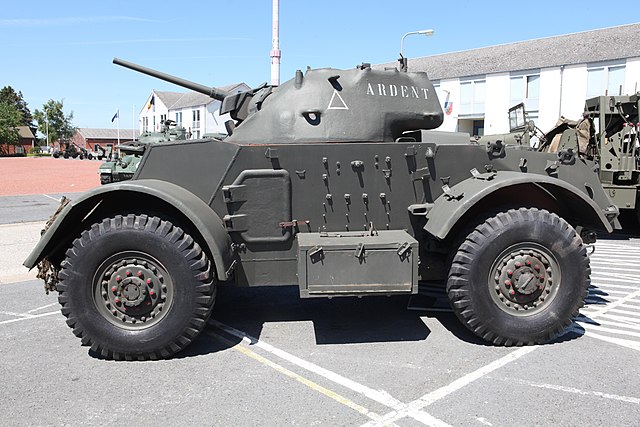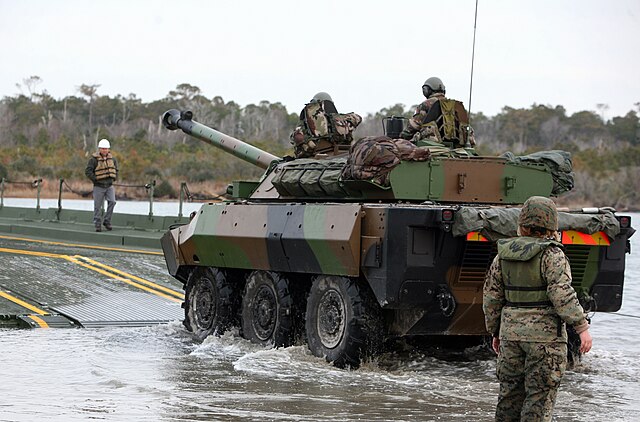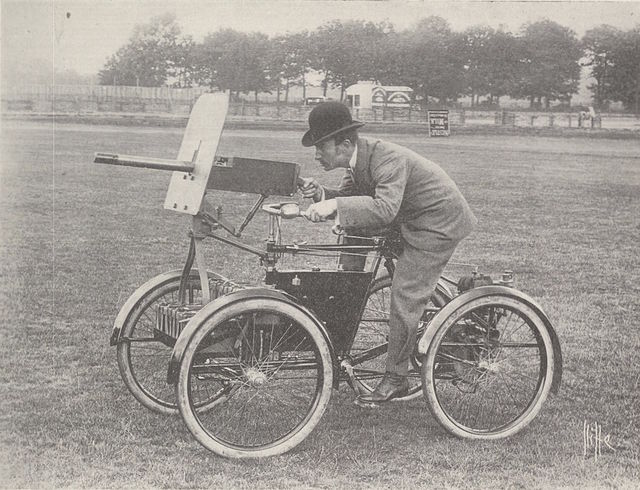The FV601 Saladin is a six-wheeled armoured car developed by Crossley Motors and later manufactured by Alvis. Designed in 1954, it replaced the AEC Armoured Car in service with the British Army from 1958 onward. The vehicle weighed 11 tonnes, offered a top speed of 72 km/h, and had a crew of three. Saladins were noted for their excellent performance in desert conditions, and found favour with a number of Middle Eastern armies accordingly. They were armed with a 76 mm low-pressure rifled gun which fired the same ammunition as that mounted on the FV101 Scorpion.
Alvis Saladin at the Royal Air Force Museum Cosford
Alvis Saladin spotted in Hurst, Texas, 7 April 2013
Alvis Saladin in Tankfest 2012.
FV 601 Saladin in Yad La-Shiryon Museum, Latrun.
A military armored car is a wheeled armored fighting vehicle, historically employed for reconnaissance, internal security, armed escort, and other subordinate battlefield tasks. With the gradual decline of mounted cavalry, armored cars were developed for carrying out duties formerly assigned to light cavalry. Following the invention of the tank, the armored car remained popular due to its faster speed, comparatively simple maintenance and low production cost. It also found favor with several colonial armies as a cheaper weapon for use in underdeveloped regions. During World War II, most armored cars were engineered for reconnaissance and passive observation, while others were devoted to communications tasks. Some equipped with heavier armament could even substitute for tracked combat vehicles in favorable conditions—such as pursuit or flanking maneuvers during the North African campaign.
U.S. T17E1 Staghound armored car of World War II
AMX-10RC, a modern armored car of the French Army
F.R. Simms' Motor Scout, built in 1898 as an armed car
F.R. Simms' 1902 Motor War Car, the first armored car to be built








